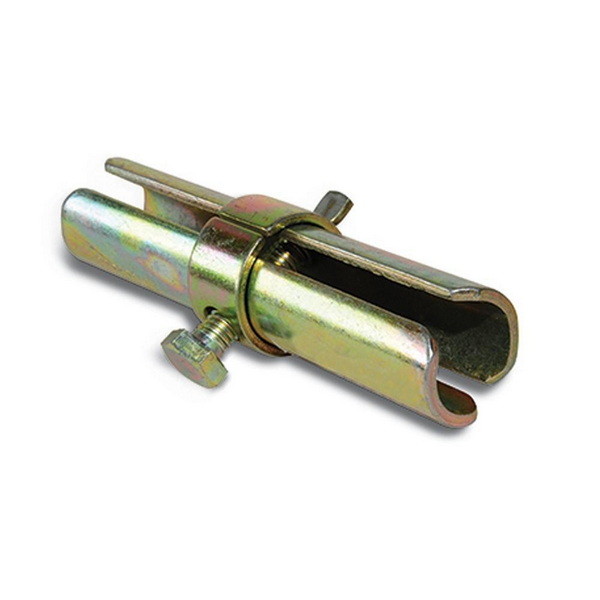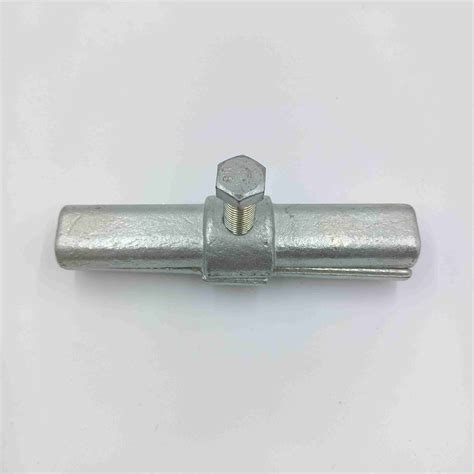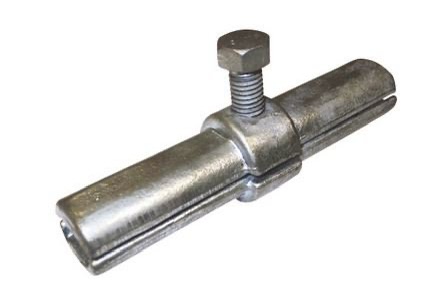Content Menu
● What Is a Scaffolding Joint Pin Coupler?
● Types of Scaffolding Joint Pin Couplers
>> 1. Pressed Joint Pin Couplers
>> 2. Forged Joint Pin Couplers
>> 3. Inner Joint Pins with Sleeve Couplers
● Can Scaffolding Joint Pin Couplers Be Used for Heavy-Duty Projects?
>> Strength and Load Capacity
>> Application in Heavy-Duty Scaffolding
>> Limitations
● Standards and Quality Assurance
● Material and Weight Considerations
● Installation and Safety Tips
● Advantages of Using Joint Pin Couplers in Heavy-Duty Projects
● Additional Considerations for Heavy-Duty Use
>> Compatibility with Scaffold Tube Specifications
>> Integration with Other Coupler Types
>> Environmental Factors
>> Load Testing and Certification
● Conclusion
● FAQ
>> 1. Can a scaffolding joint pin coupler handle heavy loads?
>> 2. Are joint pin couplers suitable for tension loads?
>> 3. What standards do scaffolding joint pin couplers comply with?
>> 4. How do I ensure compatibility of joint pin couplers with scaffold tubes?
>> 5. How often should joint pin couplers be inspected?
The scaffolding joint pin coupler plays a vital role in the assembly and structural integrity of scaffolding systems. As construction projects become more complex and demanding, the question arises: Can a scaffolding joint pin coupler be used for heavy-duty projects?This article provides a detailed exploration of the capabilities, types, standards, and practical considerations surrounding scaffolding joint pin couplers in heavy-duty applications.

What Is a Scaffolding Joint Pin Coupler?
A scaffolding joint pin coupler is a specialized fitting used to join two scaffold tubes end-to-end internally. Unlike traditional couplers that connect tubes externally, joint pin couplers fit inside the scaffold tubes, ensuring alignment and structural continuity.
These couplers are essential for extending scaffold tube lengths and maintaining scaffold rigidity without compromising safety.
Types of Scaffolding Joint Pin Couplers
1. Pressed Joint Pin Couplers
- Manufactured by pressing steel plates.
- Lightweight (approx. 630g per unit).
- Made from high-strength Q235 steel.
- Surface treated with electro-galvanization for corrosion resistance.
- Compliant with BS1139 and other international standards.
- Commonly used for OD 48.3 mm scaffold tubes.
2. Forged Joint Pin Couplers
- Made from drop-forged steel for enhanced strength.
- Heavier and more robust than pressed types.
- Hot-dip galvanized for durability.
- Suitable for higher load and heavy-duty scaffolding.
3. Inner Joint Pins with Sleeve Couplers
- Combine the joint pin with a sleeve for additional stability.
- Used to join scaffold tubes internally with extra reinforcement.
- Often used in modular scaffolding systems.
Can Scaffolding Joint Pin Couplers Be Used for Heavy-Duty Projects?
Strength and Load Capacity
Scaffolding joint pin couplers, especially forged types, are engineered to handle substantial loads. According to standards such as BS1139 and EN74:
- They can support loads equivalent to the full capacity of the scaffold tube.
- Under compression loading, joint pins maintain structural integrity.
- However, they are typically not designed for tension loads; tension requires additional bracing or couplers.
Application in Heavy-Duty Scaffolding
- Used extensively in industrial scaffolding, bridge construction, and large-scale commercial projects.
- Provide seamless tube extension, critical for tall scaffolds.
- Enable faster assembly with fewer external couplers.
- When combined with swivel or fixed couplers, they contribute to a highly stable scaffold framework.
Limitations
- Joint pin couplers should be used only with tubes of matching internal diameter.
- Not suitable for end-to-end joining of ledger tubes.
- For tension applications, additional support is necessary.

Standards and Quality Assurance
- Manufactured to meet BS1139, EN74, JIS, and AS/NZS 1576 standards.
- Surface treatments include electro-galvanizing, hot-dip galvanizing, and powder coating to resist corrosion.
- Quality control ensures smooth, burr-free finishes for safe handling.
Material and Weight Considerations
- Made of high-strength carbon steel (Q235 or Q355 grades).
- Weight varies by type: pressed joint pins weigh around 630g; forged types are heavier but stronger.
- Galvanized finishes add slight weight but improve longevity.
Installation and Safety Tips
- Use proper scaffold spanners (typically 23mm A/F) to tighten bolts to recommended torque.
- Inspect joint pins regularly for signs of wear, corrosion, or deformation.
- Replace damaged or worn couplers immediately.
- Ensure compatibility with scaffold tube diameters and wall thicknesses.
- Follow manufacturer guidelines and local safety regulations.
Advantages of Using Joint Pin Couplers in Heavy-Duty Projects
- Seamless Tube Extension: Enables longer scaffold runs without external coupling points.
- Improved Alignment: Internal connection maintains tube straightness.
- Enhanced Stability: Reduces wobble and movement in scaffolding.
- Corrosion Resistance: Galvanized finishes extend service life.
- Efficient Assembly: Speeds up scaffold erection and dismantling.
Additional Considerations for Heavy-Duty Use
Compatibility with Scaffold Tube Specifications
For heavy-duty projects, it's crucial to ensure that the joint pin coupler matches the internal diameter and wall thickness of the scaffold tubes. Using mismatched components can compromise the scaffold's structural integrity.
Integration with Other Coupler Types
Joint pin couplers are often used in conjunction with other coupler types such as swivel and fixed couplers. This combination allows for flexibility in scaffold design while maintaining strength.
Environmental Factors
Heavy-duty scaffolding projects may be exposed to harsh environments such as marine or chemical plants. Choosing joint pin couplers with appropriate corrosion-resistant coatings (e.g., hot-dip galvanizing) is essential for longevity.
Load Testing and Certification
Before deploying joint pin couplers in heavy-duty projects, it's advisable to verify that they have undergone rigorous load testing and certification by recognized bodies. This ensures compliance with safety standards and reliability under stress.
Conclusion
A scaffolding joint pin coupler can indeed be used for heavy-duty projects, particularly when forged and properly installed. These couplers provide strong, durable, and corrosion-resistant connections essential for tall and complex scaffolding structures. While they excel under compression loads, care must be taken to supplement them in tension applications. Adhering to standards and maintenance protocols ensures that joint pin couplers contribute effectively to scaffold safety and performance in demanding environments.

FAQ
1. Can a scaffolding joint pin coupler handle heavy loads?
Yes, forged joint pin couplers are designed to handle loads equivalent to the scaffold tube capacity under compression.
2. Are joint pin couplers suitable for tension loads?
No, joint pin couplers are not intended for tension; additional bracing or couplers are required for tension applications.
3. What standards do scaffolding joint pin couplers comply with?
They comply with BS1139, EN74, JIS, and AS/NZS 1576 standards.
4. How do I ensure compatibility of joint pin couplers with scaffold tubes?
Use joint pins that match the internal diameter and wall thickness of the scaffold tubes.
5. How often should joint pin couplers be inspected?
They should be inspected before each use and regularly for signs of wear, corrosion, or damage.






















